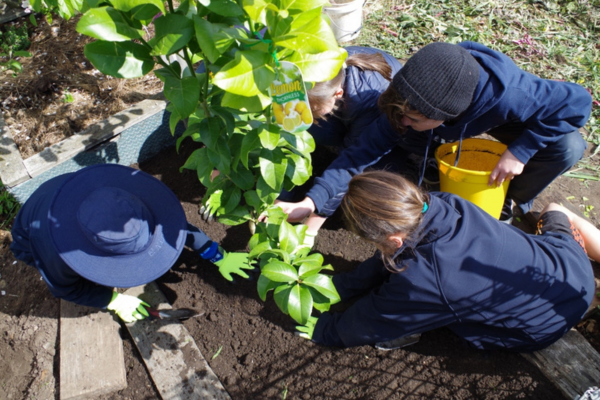Horticulturalist answers school garden questions

We asked our community of garden educators what troubleshooting they would like more expert advice on. We received some clear themes from this callout, with citrus trees, soil health and hardy seedlings very popular topics!
We collaborated with Seasol International's horticulturalist team to help zone in on some useful gardening solutions. For over 40 years, Seasol has contributed to healthy plants, strong communities and a sustainable environment. Let’s dip into some tricky questions and see what their experts recommend.

What’s the best way to care for citrus trees for bountiful crops in our school kitchen garden? Do you have suggestions for companion planting with citrus?
"Gardeners should aim to water citrus plants regularly and deeply to promote proper fruit development and production. It's important to provide them with good soil, sunlight, and nutrients to help them grow strong and healthy and produce juicy fruit. During the growing and fruiting seasons, you can ensure a bigger and juicier yield by:
- Checking the soil under the tree canopy and removing any weeds.
- Incorporating organic matter or homemade compost into the soil to improve soil health.
- Applying a fast-acting liquid fertiliser for fruit and citrus varieties to the entire area under the tree canopy, every two to four weeks.
- Mulching to keep the soil underneath the tree moist.
You may like to plant companion plants such as lavender, rosemary, salvias and low-growing herbs like thyme to attract bees for pollination. Clover is another useful ground cover as it not only competes with weeds while actively growing, but it acts as a mulch after it dries off, attracting pollinators and fixing nitrogen in the soil"
Kitchen Garden Program members can explore our advice on growing fruit trees and mulching. Once you’ve got your bountiful citrus harvest, you might want to explore our lemon recipes collection, including our delish triple citrus marmalade.

Help! Tree roots are sucking all nutrients from our veggies in raised beds.
"We suggest heavy pruning of the trees to reduce nutrient loss from the soil and allow for more sunlight to reach your vegetables. If possible, raise the garden beds and add more soil, organic matter, and homemade compost to improve soil health, moisture retention, and nutrient levels.
If raising the beds is not an option, apply organic matter or liquid compost regularly to enhance soil structure and promote worm and microbe activity. Feed your vegetables weekly with a fast-acting fertiliser to support strong growth, flowering, and fruiting."
Kitchen Garden Program members can check out our pruning guide and fertiliser resources on the Shared Table. Not a member yet? No worries, you can read our news stories about creative composting, using fertiliser in the garden and the practical applications of a weed mat in one of our member schools.

How can I identify healthy and sad soils? How can I turn sad soil into happy soil?
"Building healthy soil can take time but is worth the effort you put in. Applications of organic matter is often key. Check the soil texture by putting your finger in different spots of the earth. Good-quality soil should feel crumbly and retain moisture and nutrients, promoting worm activity.
You can also test soil moisture by watering it. If the water runs off or pools on top, the soil may be repelling water. Improve soil quality by adding organic matter and homemade compost to revitalise its health and structure. This will also increase worm and microbe activity."
Kitchen Garden Program members can explore our soil health collection for more tips and advice over on the Shared Table. Not a member yet? No worries, you can get inspired by our news stories with soil testing STEM activities and fun facts about our favourite soil-dwelling creature – the earthworm!

Can you give advice on hardening up my seedlings? None of them have survived the transition from propagating tray to the veggie patch.
"After seeds germinate, apply a liquid fertiliser every week to the propagation tray. This will help with healthy growth and strong root development. Also, apply before and after transplanting to reduce transplant shock and aid plant. Don't transplant your seedlings until the soil and temperature warm up. Also, never put them out on windy or frosty days!
Harden the plants slowly by placing them outside in a warm, protected area. Bring them inside at night for a couple of weeks before transplanting them to the veggie patch. Try to make sure the seedlings are a good size before removing them from the propagating tray. Underdeveloped seedlings usually won't survive transplanting."
Kitchen Garden Program members can learn more about raising seedlings in this handy resource on the Shared Table or reading these heartwarming stories about Kitchen Garden Program members raising their first batch of seedlings.
Thank you so much to the horticulture team at Seasol for sharing their incredible wealth of gardening experience and advice!
< Back to Latest News
